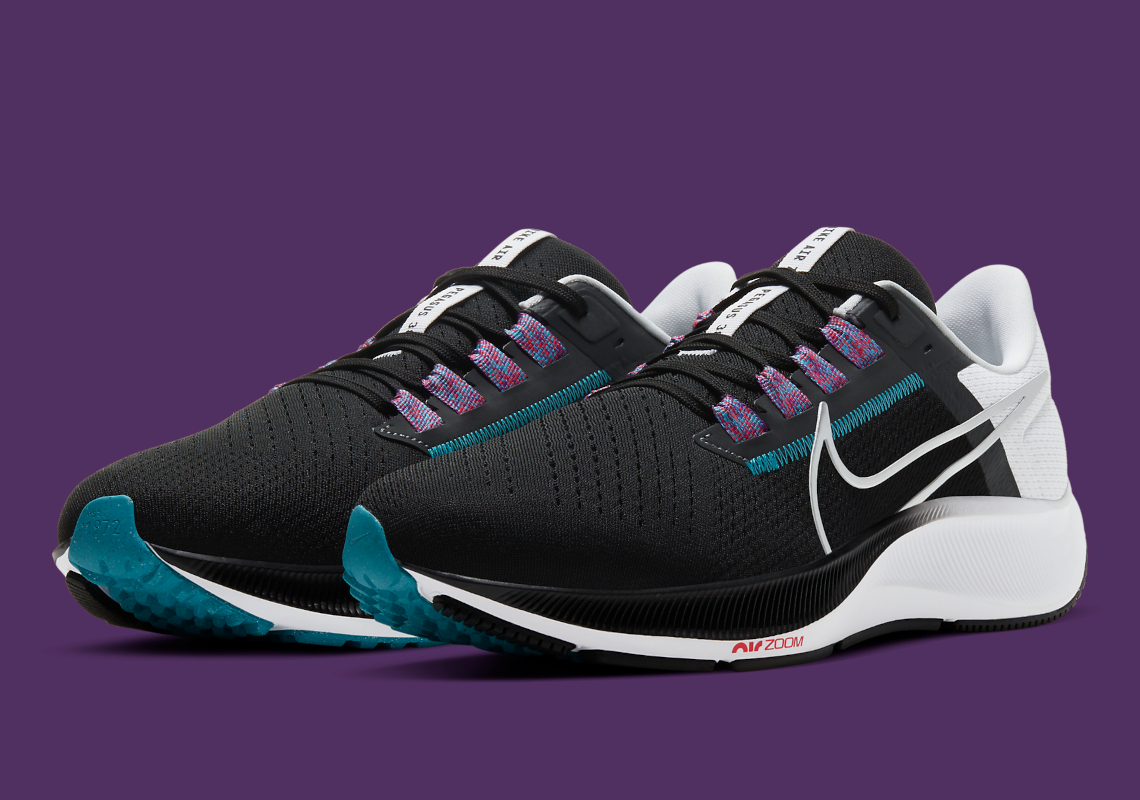

I often see in the clinic (anecdotal evidence alert) people who have posted shoes that tilt severely laterally when placed on a table. The same is going to be true for dual density midsoles. It's truly going to depend on the runner. On the other side, some people might benefit from a forefoot unit (in the Zoom Air pods) that do not compress down and maintain the same amount of protection underneath. The issue is that for people with sensitive toe joints or metatarsals, this may become bothersome over time due to increased pressure in those areas.

This led to these pods becoming noticeable and placing more pressure on my forefoot.

Even after 45 minutes, the React foam (which shows its wear immediately with some midsole creasing) compresses more quickly than the Zoom Air pods. So here lies the risk of varying components in a single midsole - some of the components may compress or wear out more quickly than others, changing the effect of the shoe on the foot. Additionally, over the course of weeks, the foam slowly stops returning fulling to its original shape, which is what eventually leads to a "dead" midsole when the shoe is ready to be replaced.

We know that over the course of a single run, the matrix in foam compresses slightly by the end of the run (and then return to, or close to, its original shape). However, there are other examples like dual density midsoles like shoes with medial posts or the HOKA J Frame, or those with multiple foams with different constructions interacting (ASICS Glideride, Mizuno Wave Sky/Horizon). Obviously we have the example here, where the Zoom Air pods are embedded within a React midsole. Let's talk about midsoles with multiple components and how that may influence how the shoe changes not only long term, but also within an individual run. It is soft and protective enough for recovery miles and taking it easy, but easily picks up the pace when opening up for tempos or strides. Given the more snug upper and bouncy/responsive midsole this is a versatile trainer. For me, this did lead to some soreness in the balls of my feet, but may not be the case for all (more on this later). However, later in the run (for me after 45 minutes) I did start to notice the pods placing increased pressure when I would stop. Early in runs, transitions to toe off are smooth and the Zoom Air pods do give a high amount of forefoot cushion/protection for the amount of stack. This is where the Zoom Air pods come into play. The react foam and classic beveled heel is soft and smooth upon landing in the heel and transitions well to the forefoot. Certainly is on the more propulsive and fun end of the spectrum when it comes to daily trainers. The ride of this shoe is smooth, soft, and bouncy.
#Nike air zoom pegasus 38 blue full#
The company has noted that the Pegasus 36 and 37 were a bit more snug in the forefoot, but the design team has switched back to a roomier fit.The midsole is made of two components: full length React foam and the Zoom Air pods which are placed in the forefoot. RELATED: Nike releases Pegasus 37 with React foam What’s new?Ī big change Nike made with the Air Zoom Pegasus 38 was the fit, particularly in the shoe’s toe box. The Zoom Air Bag, which was added in 2020, was also kept in the Pegasus 38, and combined with the React foam, the shoe will deliver great energy return while remaining lightweight at just 265 g. The React foam is back in the Pegasus 38, but with even more of it in the midsole this time around. Fans of the Pegasus will know that the 37, which was released in 2020, saw a big change in its midsole, where Nike’s React foam replaced the Cushlon foam found in previous shoes. That has been the case for decades, and the company hopes to keep it that way with the Pegasus 38 and future versions of the shoe. Nike says the Pegasus is the company’s most trusted running shoe. Just like the first version and every other iteration since, the Pegasus 38 is a shoe designed for all runners, and its lightweight and durable makeup is what has kept people coming back to it year after year. Runners will know the Pegasus well, as it has been a staple of the Nike running family since the early 1980s. Nike announced the release of its latest shoe on Friday morning, introducing the Air Zoom Pegasus 38 to the world.


 0 kommentar(er)
0 kommentar(er)
